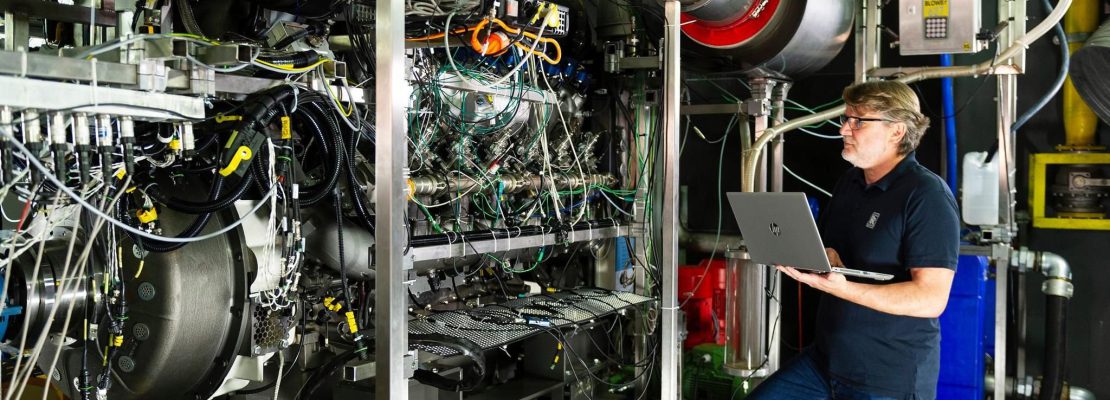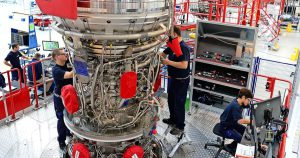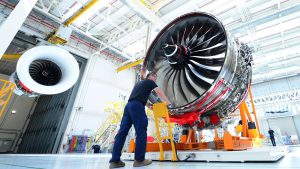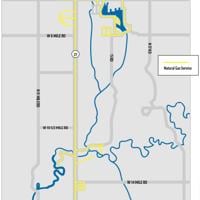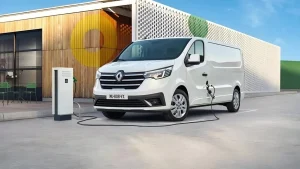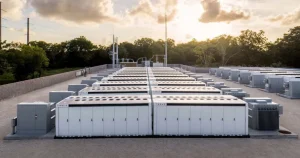Engine maker Rolls-Royce Power Systems (RRPS) is hoping the federal government’s strategy will give its own business a big boost.
Daniel Chatterjee, Director of Sustainability and Technology Strategy, and Michael Stipa, Vice President of Business Development and Product Management, explained this in an interview with the “Schwäbische Zeitung”.
In particular, this involves the construction and operation of small gas plants to strengthen the national grid, which do not work with gas plants, as is common today, but with gas engines – the domain of the Friedrichshafen company.
According to RRPS management, several container-sized units, which have an output of 2.5 megawatts, can be linked together to achieve a plant output of between 60 and 100 megawatts. For comparison: a typical gas-fired power plant has a typical output of around 500 megawatts.
The demand for flexible energy consumption is increasing
“Currently the discussion is mainly about the construction of large gas plants,” explains Michael Stipa. However, with the development of the energy transition and the expansion of renewable energy in the face of existing restrictions on the electrical grid, the demand for usable energy could increase – especially in the so-called dark lulls, when the sun does not shine and the wind. it has no blow. In these cases, gas engine power plants can outperform gas turbine power plants.
Advantages from RRPS point of view: They are faster to plan and build and also cost less. They can be run in sequence, which means that in a power plant with 30 gas engines, only as many units need to operate as the energy is currently needed.
Most importantly, they can be started and closed more quickly. “Gas engine power plants operate at full capacity within 120 seconds, which is much faster than gas turbine power plants,” says Stipe.
The role of gas engines in the power plant mix is still unclear
However, it remains to be seen whether the reasoning of the RRPS management is correct and whether gas engines will play a role in the Federal Republic’s future power plant mix. The only thing that is certain so far is that the federal government will initially put gas-fired power plants with a total capacity of up to ten gigawatts out to tender and will probably support their construction with investment cost subsidies.
The power plants will be transferred to the so-called capacity market in 2028 at the earliest and operators will be paid for producing the output of the power plant. The way it works is similar to insurance and takes into account the fact that gas power plants are needed less and less and are therefore no longer suitable for operators.
Therefore, in the future, suppliers should be paid for being ready to produce quickly and provide electricity when it is needed. But they are not only paid for the electricity they produce, but also for the fact that they can supply it when it is needed – for example when the wind and the sun do not provide enough energy. The capacity of power plants that are always maintained is meant to ensure that there is always enough electricity.
Recommended articles
Between 2035 and 2040, all gas-fired power plants should be completely converted to climate-friendly hydrogen and no longer use natural gas. A requirement that RRPS gas engines of the man-4000 series already fulfill today.
The future use profile favors gas engines
In the energy sector, it is assumed that the first tenders will be held in the second half of this year. Against this background, RRPS manager Chatterjee claims: “In our opinion, appropriate laws should be made in such a way that they also enable gas engine power plants.”
Given the short-term future applications for covering higher loads, these will not only have a cost advantage over gas turbine power plants. A megawatt hour of electricity can be produced much cheaper than with a gas turbine power plant. The planning and approval processes as well as construction would also take a very short time, three to four years.
In addition, gas engine power plants can help solve a problem that is bothering southern Germany: after the last nuclear plants are closed and the imminent phase out of coal-fired power generation, not just too few. power plants compared to electricity demand.
According to expert estimates, Baden-Württemberg alone needs new gas plants with an output of at least 6.5 gigawatts. These new power plants should also be built in so-called system servicing areas – that is, where a large number of interventions to stabilize the electricity grids are currently causing additional costs in the system. And so it is in southern Germany.
The systems have already proven themselves in practice
Poland and the UK show that gas engine power plants already play an important role in the energy system. For example, Rolls-Royce has already installed 500 such systems on the island. There is already a potential market there. From the experience gained, we can see that the systems have proven themselves in practice, says RRPS man Stipa.

